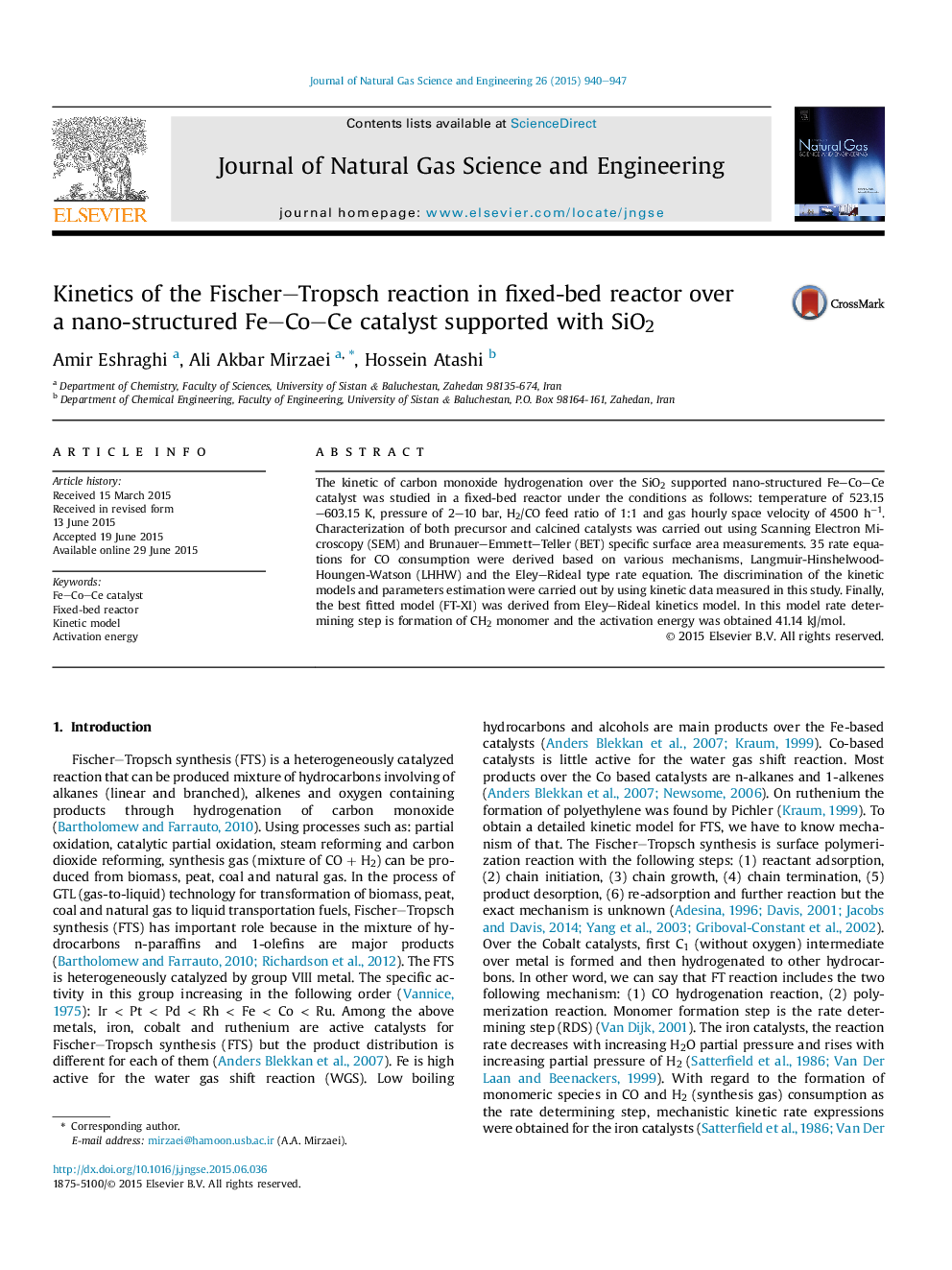| Article ID | Journal | Published Year | Pages | File Type |
|---|---|---|---|---|
| 1757586 | Journal of Natural Gas Science and Engineering | 2015 | 8 Pages |
•We derived eighteen kinetics models based on various mechanisms.•The best fitted model is developed from the carbide surface mechanism.•The Rate determining step is reaction between surface carbon and gas phase hydrogen.•The best activation energy of CH2 formation was found to be 41.14 kJ/mol.•The best enthalpy of carbon monoxide adsorption was found to be –19.14 kJ/mol.
The kinetic of carbon monoxide hydrogenation over the SiO2 supported nano-structured Fe–Co–Ce catalyst was studied in a fixed-bed reactor under the conditions as follows: temperature of 523.15–603.15 K, pressure of 2–10 bar, H2/CO feed ratio of 1:1 and gas hourly space velocity of 4500 h−1. Characterization of both precursor and calcined catalysts was carried out using Scanning Electron Microscopy (SEM) and Brunauer–Emmett–Teller (BET) specific surface area measurements. 35 rate equations for CO consumption were derived based on various mechanisms, Langmuir-Hinshelwood-Houngen-Watson (LHHW) and the Eley–Rideal type rate equation. The discrimination of the kinetic models and parameters estimation were carried out by using kinetic data measured in this study. Finally, the best fitted model (FT-XI) was derived from Eley–Rideal kinetics model. In this model rate determining step is formation of CH2 monomer and the activation energy was obtained 41.14 kJ/mol.
Graphical abstractKinetics of the Fischer–Tropsch reaction in fixed-bed reactor over a nano-structured Fe–Co–Ce Catalyst supported with SiO2.Figure optionsDownload full-size imageDownload high-quality image (179 K)Download as PowerPoint slide
